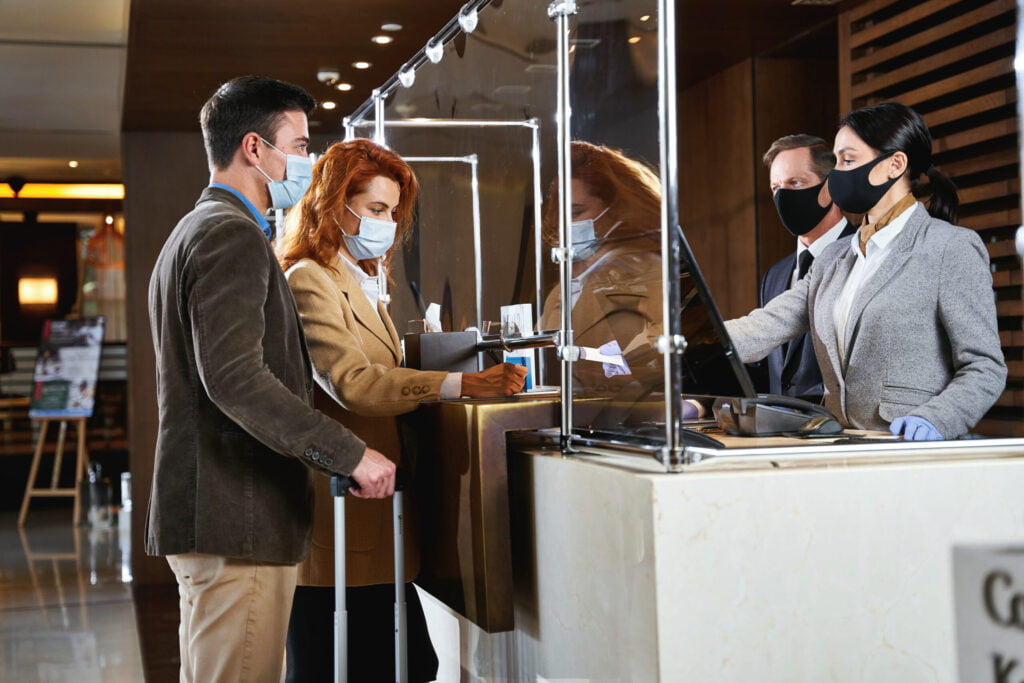Visitor management plays a crucial role in maintaining the security and integrity of any business, organization, or public space. Streamlining this process not only reduces inconvenience for guests but also improves site security and overall efficiency. In this article, we’ll discuss the best practices to enhance your visitor management system and make your premises more secure and efficient.
Enhancing Security Through Technology

The right technology can make a significant difference in the security and efficiency of your visitor management system. By automating and digitizing key processes, technology can minimize the risks of manual errors or oversights and provide valuable real-time data on visitor activity. For example, a visitor management system can automatically capture visitor data, verify identification, issue badges, grant access, and maintain records on who is currently on-site and for what purpose.
In addition, you’ll want to get an advanced visitor management system that integrates seamlessly with video security and access control to help create a more secure environment. Options include integrating security cameras and biometric scanners or employing automatic number plate recognition systems for vehicle access management. Advanced analytics can also be used to monitor visitor patterns and quickly identify any unusual or suspicious activity.
When implementing new technology, it’s essential to consider the needs and expectations of your visitors. User-friendly systems that are easy to navigate and quick to complete will not only improve efficiency but also create a positive impression of your organization.
Implementing Clear Policies and Procedures
Having well-defined policies and procedures is a crucial aspect of streamlining visitor management. Clear guidelines help both staff and visitors understand their responsibilities and the steps required for the proper check-in and check-out experience. This can include high-level requirements such as visitor identification, signing in and out, and displaying visitor badges, as well as more detailed procedures related to non-disclosure agreements, emergency protocols, or specific site regulations.
In addition to developing clear policies and procedures, it’s important to communicate these guidelines to all relevant parties. This may involve staff training programs, visitor orientation materials, or signage throughout your facility. Regularly reviewing and updating these procedures can also help ensure they remain relevant and effective in addressing your organization’s unique security and efficiency needs.
Importance of Updating Your Visitor Management Policies

An outdated visitor management plan can leave your organization vulnerable to security threats and cause delays or confusion for guests. It’s essential to assess your system regularly to identify and resolve any possible weaknesses. A simple way to begin this assessment is by documenting any issues related to security, efficiency, or user experience. Once you have a clear understanding of the areas that need improvement, you can begin researching the most effective solutions to streamline your processes.
Some common visitor management challenges include slow or cumbersome check-in processes, unreliable or inaccurate visitor data, and inefficient handling of non-disclosure agreements or other legal documents. To address these concerns, it’s essential to keep up to date with the latest tools and technology available for improving visitor management.
Updating your visitor management system not only enhances security but also improves the guest experience. A streamlined process reduces waiting times and creates a more professional impression, reflecting positively on your organization as a whole. Thus, it’s in your best interest to prioritize regular updates and improvements to your visitor management system.
Maintaining Data Privacy and Compliance

A strong visitor management system should also include maintaining the highest standards for data privacy and compliance. Accurate and up-to-date visitor records are essential for security purposes, but it’s crucial to manage this information responsibly according to data protection regulations and best practices. This involves ensuring visitors are informed about the data being collected, its purpose, and how it will be used.
Digital visitor management systems can help maintain data privacy and compliance by providing secure storage and access to visitor records. This may include data encryption, user authentication, and regular backups to protect against unauthorized access or data loss. In addition, cloud-based systems can facilitate compliance with international data protection regulations by supporting the secure transfer and storage of data in accordance with relevant legislation.
By demonstrating a strong commitment to data privacy and compliance, you can instill confidence in your visitors and further strengthen the reputation of your organization.
Enhancing your visitor management system involves regularly updating processes and technology, implementing clear policies and procedures, enhancing security through technology, and maintaining data privacy and compliance. By adhering to these best practices, you can create a more secure and efficient environment that reflects positively on your organization’s overall reputation and success.

























